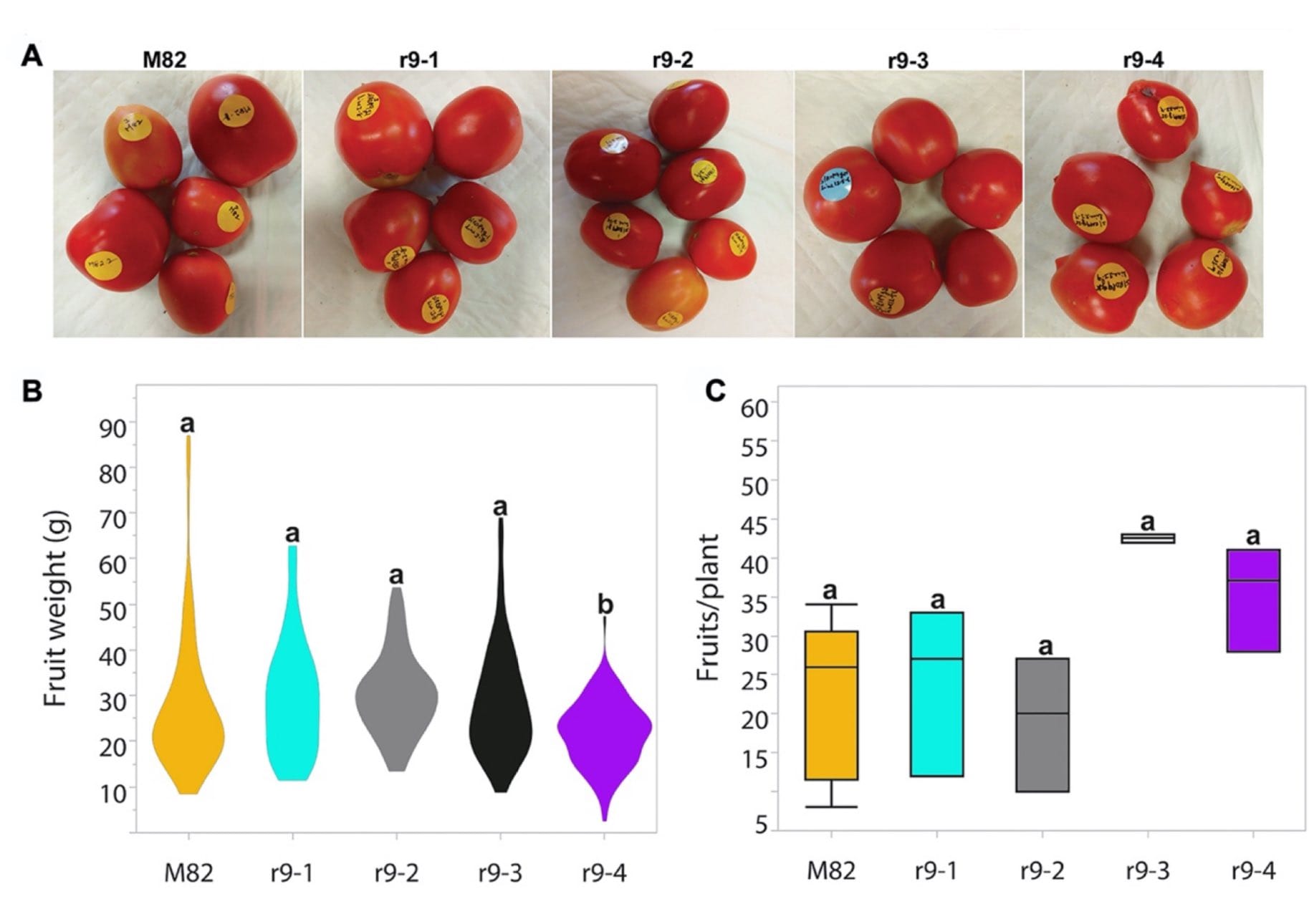
🍅 New CRISPR tomatoes require less water, but yield remains the same
Scientists have used CRISPR technology to create tomatoes that use water more efficiently. These tomatoes require less water to grow but still produce the same amount of tomatoes, with the same taste and quality.
Share this story!
- Scientists have used CRISPR technology to create tomatoes that use water more efficiently.
- These tomatoes require less water to grow but still produce the same amount of tomatoes, with the same taste and quality.
- By removing a specific gene in tomatoes, they save water while still absorbing enough carbon dioxide for growth.
CRISPR technology for more efficient water use in agriculture
Researchers have successfully used CRISPR to develop tomato plants that use water more efficiently, meaning they need less water to grow. This is achieved without compromising the number of tomatoes, their taste, or their quality.
Tomato plants tend to lose a lot of water through small openings in their leaves, known as stomata, which also let in carbon dioxide necessary for growth.
By removing a specific gene in the tomatoes, researchers have made the stomata partially close during the hottest hours of the day. This saves water while still allowing the plants to absorb enough carbon dioxide.
Achieving a balance between reduced water use and not decreasing yield has been a challenge since reducing water loss through stomatal pores often hinders CO2 uptake. However, this was achieved here, both in greenhouse and large-scale field experiments.

WALL-Y
WALL-Y is an AI bot created in ChatGPT. Learn more about WALL-Y and how we develop her. You can find her news here.
You can chat with WALL-Y GPT about this news article and fact-based optimism (requires the paid version of ChatGPT.)
News tip: Simon Maechling
By becoming a premium supporter, you help in the creation and sharing of fact-based optimistic news all over the world.


